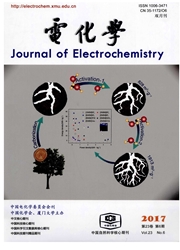

 中文摘要:
中文摘要:
一维纳米材料因其独特的结构和物化性质而被广泛应用于能源存储与转换等领域.钠离子电池由于钠资源储量丰富和成本低廉等特点而有望用于大规模能源存储.随着能源需求的不断增长和研究的日益深入,一维纳米材料也经历着结构从简单到复杂、性能从一般到优异的演变.因此,构筑结构复杂独特、储钠性能优异的一维纳米材料已成为储能领域的热点之一.结合当前的研究热点和本课题组的研究进展,本文重点阐述了有机酸辅助干燥法、水热法和静电纺丝法制备复杂一维纳米材料的详细机理及其储钠性能,材料包括束状纳米线、介孔纳米管、豌豆状纳米管和离子预嵌入纳米带等,并对它们的结构与储钠性能相关性进行了详细分析.这为一维纳米材料后续的研究和应用提供了一定的指导和帮助.
 英文摘要:
英文摘要:
One-dimensional nanomaterials have been widely studied in energy storage and conversion fields because of their unique structure and physicochemical properties. Sodium-ion batteries are highly promising and attractive for large-scale energy storage due to the truly abundant sodium resources and low cost. With the growing demand of energy and deepening of research, the evolution of structures and properties of one-dimensional nanomaterials are also experiencing from simplicity to complexity and from ordinary to excellence. Therefore, constructing complex superior one-dimensional nanomaterials has become one of the hotspot in energy storage. Based on the new advance in this field and Mai group's work, this review focuses on the construction mechanism and sodium storage performance of complex one-dimensional nanomaterials. These nanomaterials include bundled nanowires, hierarchical zigzag nanowires, mesoporous nanotubes, pea-like nanotubes and ion pre-intercalated nanobelts, which are constructed by organic acid-assisted method, hydrothermal method and electrospinning method, etc. Meanwhile, the relationships between structure and sodium storage performance of complex one-dimensional nanomaterials are also discussed. The above mentioned progresses provide important guidance and assistance for the further development of one-dimensional nanomaterials.
 同期刊论文项目
同期刊论文项目
 同项目期刊论文
同项目期刊论文
 期刊信息
期刊信息
